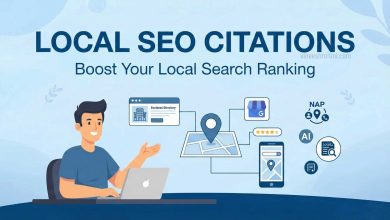Embrace the Connected Future: Welcome to the World of IoT
Introduction
The internet of things (IoT) is an umbrella term that describes the connection of a wide variety of physical objects or devices to the internet. These devices range from everyday household appliances, such as refrigerators and washing machines, to industrial equipment and machinery. The IoT is often seen as the next frontier in the digital revolution, offering the potential to create a more connected and efficient world. This essay will explore the concept of IoT, its history, its benefits and drawbacks, its potential impact on society, and the challenges that it poses.
History of IoT
The concept of IoT can be traced back to the 1990s when Kevin Ashton, a British entrepreneur, first coined the term “Internet of Things” in a presentation to Procter & Gamble. However, it wasn’t until the early 2000s that the technology began to take shape, with the advent of RFID (Radio Frequency Identification) and M2M (Machine-to-Machine) communication. These technologies enabled physical objects to be identified and tracked, and for machines to communicate with each other.
The development of wireless technology, particularly the advent of Wi-Fi and Bluetooth, further facilitated the growth of IoT. By the mid-2000s, IoT had become a hot topic in the tech industry, with companies such as Google and Cisco investing heavily in the technology. Today, IoT is a multi-billion-dollar industry, with countless applications and devices being developed every day.
Benefits of IoT
The potential benefits of IoT are many and varied. One of the key benefits is increased efficiency. By connecting physical objects to the internet, businesses can monitor and optimize their operations in real-time, reducing waste and improving productivity. For example, a manufacturer could use IoT to monitor its supply chain, tracking inventory levels and delivery times to ensure that goods are always in stock.
IoT can also help to improve safety and security. By equipping devices with sensors, businesses can monitor their operations for potential hazards, such as fires, gas leaks, or equipment failures. This information can be used to alert staff to potential dangers, enabling them to take corrective action before any damage is done.
In the home, IoT can help to automate routine tasks, such as turning lights on and off or adjusting the thermostat. This can help to reduce energy consumption and save money on utility bills. IoT can also be used to improve healthcare, with devices such as smartwatches and fitness trackers enabling patients to monitor their health in real-time and receive personalized feedback.
Drawbacks of IoT
Despite the many benefits of IoT, there are also some drawbacks that must be considered. One of the key concerns is privacy and security. With so many devices connected to the internet, there is a risk that personal data could be compromised. Hackers could potentially gain access to sensitive information, such as credit card details or medical records.
Another concern is the potential for job displacement. As more tasks are automated through IoT, there is a risk that some jobs could become redundant. This could have a significant impact on the economy, particularly in sectors such as manufacturing and transportation.
Finally, there is also a risk that IoT could exacerbate existing social inequalities. As the cost of IoT devices decreases, they will become more accessible to the general public. However, those who cannot afford to invest in IoT may be left behind, exacerbating existing disparities in access to technology.
Impact of IoT on Society
The impact of IoT on society is likely to be significant. As more devices are connected to the internet, the way that we live and work is likely to change dramatically. For example, in the home, IoT could lead to the creation of smart homes, where appliances and devices are connected and automated, enabling users to control their home environment from anywhere in the world.
In the workplace, IoT is likely to lead to the automation of routine tasks and the optimization of operations. This could result in increased productivity and efficiency, as well as cost savings for businesses. For example, in manufacturing, IoT can enable machines to communicate with each other, allowing for predictive maintenance and reducing downtime.
In the healthcare sector, IoT has the potential to revolutionize patient care. Connected devices can monitor vital signs and send real-time data to healthcare providers, enabling early detection of health issues and remote monitoring of patients. This can lead to improved patient outcomes and reduced healthcare costs.
Transportation and logistics are other areas that stand to benefit from IoT. Connected vehicles can gather data on traffic patterns, weather conditions, and fuel consumption, allowing for more efficient route planning and reduced emissions. Additionally, IoT can enable real-time tracking of shipments, improving supply chain management and reducing delays.
The agricultural sector is also ripe for IoT implementation. Smart farming techniques, such as soil sensors and automated irrigation systems, can optimize crop yields while conserving resources. Farmers can remotely monitor and control their operations, leading to increased productivity and sustainability.
Challenges of IoT
While the potential of IoT is immense, there are several challenges that need to be addressed. First and foremost is the issue of security. As more devices become connected, the risk of cyberattacks and data breaches increases. Manufacturers and developers must prioritize robust security measures to protect user data and ensure the integrity of IoT systems.
Interoperability is another challenge. With a multitude of devices and platforms, ensuring seamless communication and compatibility becomes crucial. Standards and protocols need to be established to enable interoperability and foster collaboration among different IoT solutions.
Scalability and infrastructure are also concerns. As IoT adoption grows, the infrastructure needs to support the increased connectivity and data traffic. This includes reliable and fast internet connections, as well as adequate storage and processing capabilities to handle the enormous amounts of data generated by IoT devices.
Ethical considerations should not be overlooked either. The collection and use of personal data raise privacy concerns. Clear guidelines and regulations must be in place to protect individuals’ privacy rights and ensure transparent and responsible data handling practices.
Conclusion
The internet of things represents a paradigm shift in the way we interact with the physical world. With its potential to connect devices, improve efficiency, and enhance our lives, IoT has garnered significant attention and investment. However, challenges such as security, interoperability, scalability, and ethics need to be carefully addressed to unlock the full potential of IoT.
As we move forward, it is crucial to strike a balance between embracing the benefits of IoT and addressing the associated risks. Through collaboration between governments, businesses, and individuals, we can ensure that IoT is deployed responsibly and ethically, fostering innovation while safeguarding privacy and security.
With continued advancements in technology and the increasing adoption of IoT, we are on the cusp of a connected future. Embracing this transformative technology has the potential to create a more efficient, sustainable, and interconnected world, revolutionizing industries, improving our daily lives, and shaping the way we interact with the world around us.



